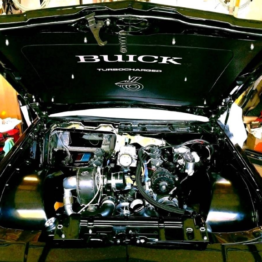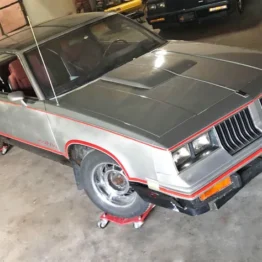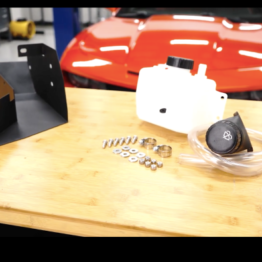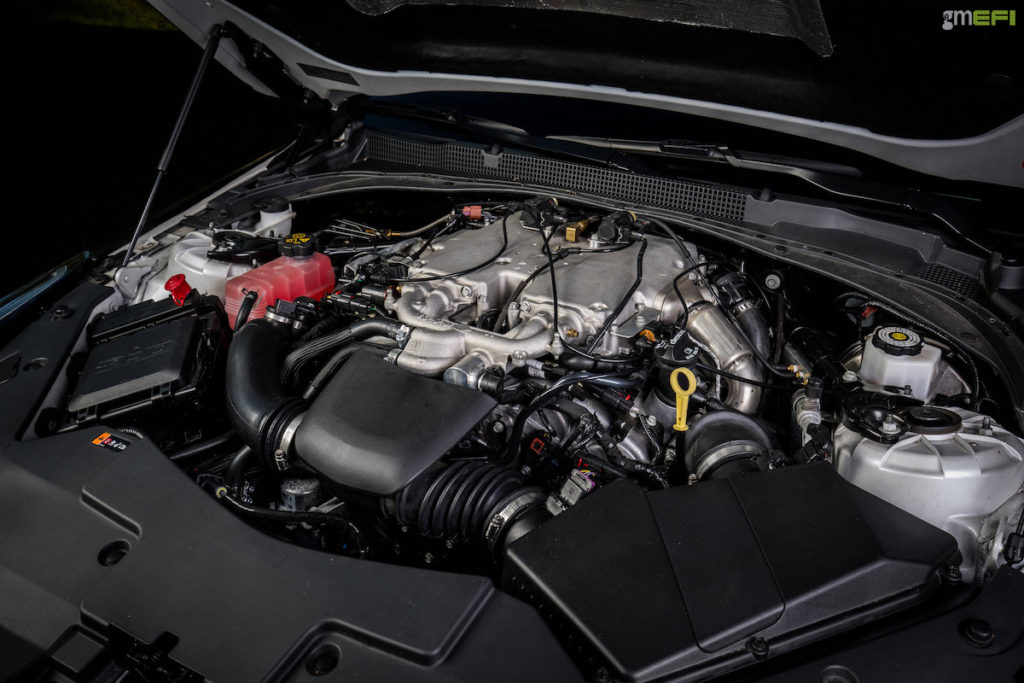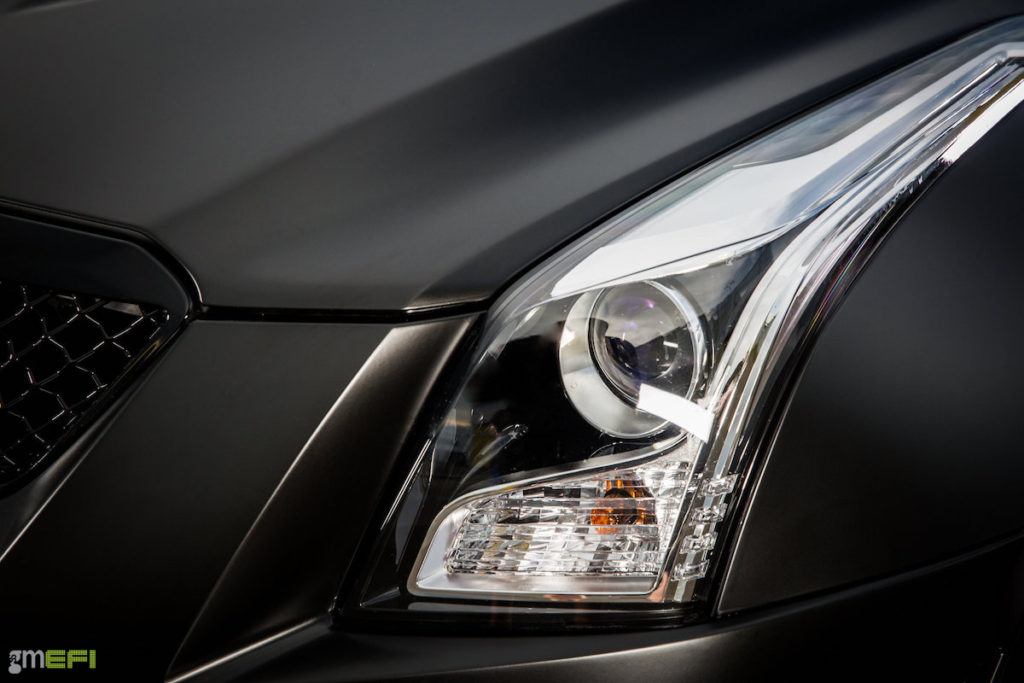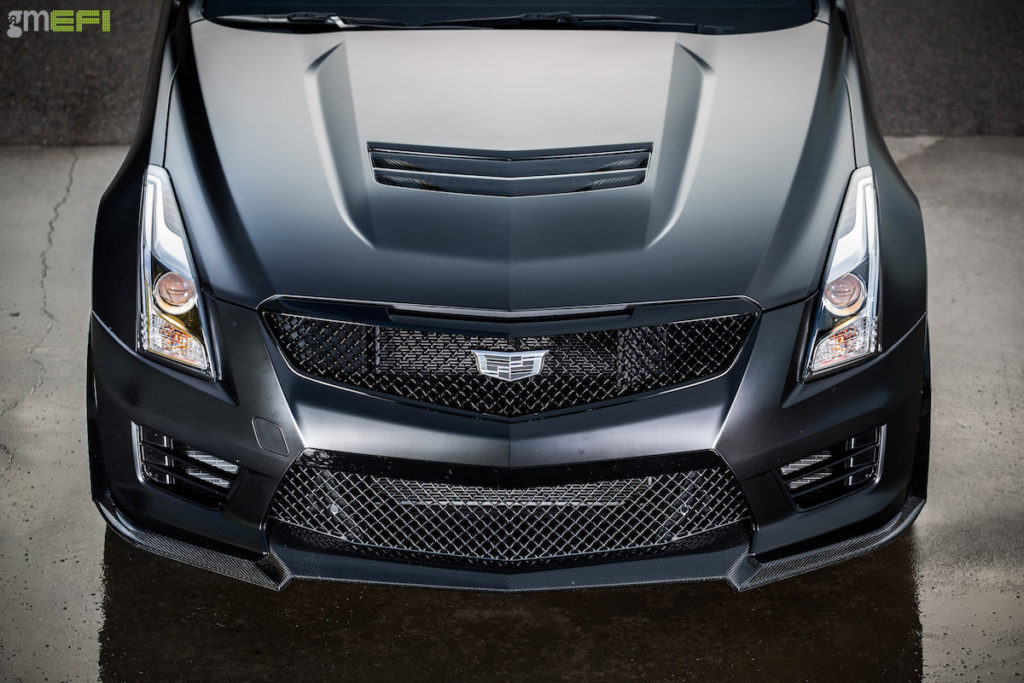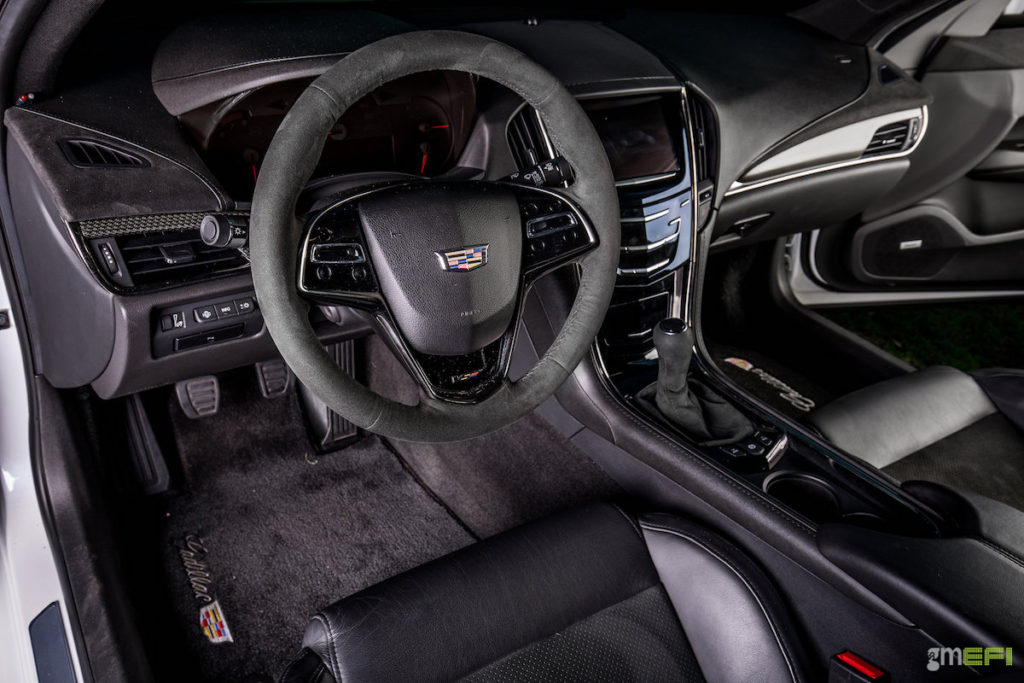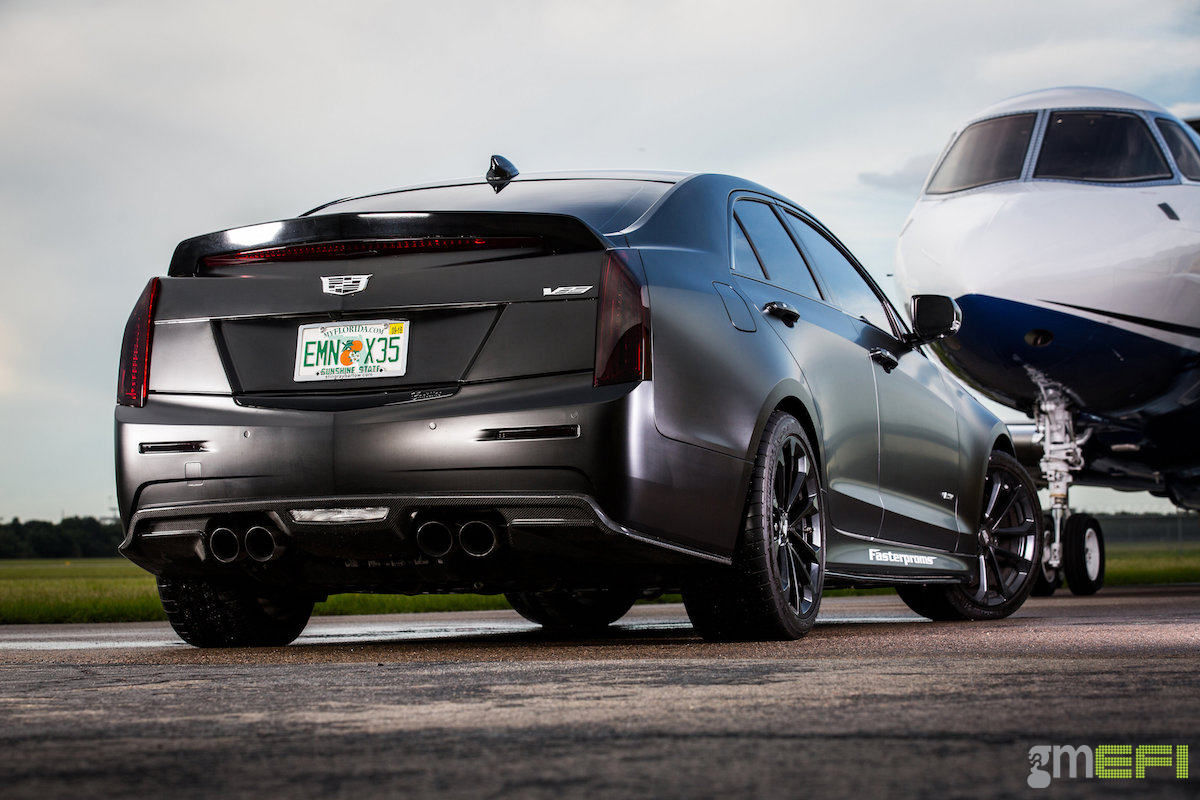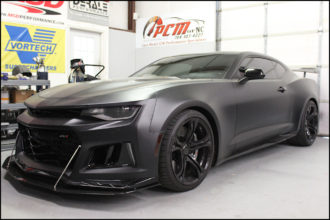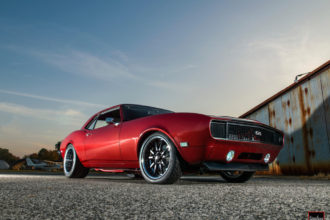photos by: Kevin DiOssi
You’re Looking at the World’s Fastest ATS-V (to date) — You’re Welcome.
When Cadillac frats launched the V-Series line of high performance Cadillacs back in 2004, even they probably doubted it would have lasted as long as it has. I’m sure they were optimistic, but you can’t tell me that there was a shred of doubt in their minds that the performance arm of the Wreath an Crest brand would continue to legitimately take on their German counterparts through 2017.
The brand launched modestly, with one model based off of the then recently-released first-generation CTS, itself, a crash course in performance upgrading; a car that was initially designed as a Euro-style sport sedan, that had to take on the persona of a musclecar-meets-luxury-corner-carver. The first CTS-V was well-received by most critics, and still has a cult following today. Later, Cadillac extended the V-Series range to the XLR and STS, as well as the ATS in recent years.
However, unlike the previous V-Seires cars that featured naturally-aspirated and supercharged V8 power (depending on vehicle), the ATS relies on a 3.6L V6 with twin hairdryers. Initially scoffed at by V-Series loyalists and purists, it soon wasn’t difficult to figure out that the factory’s 464 hp can easily pumped up quite a bit with tuning and the right combination bolt-ons.
Jeremy Formato of FASTERPROMS in Tampa, Florida is one ATS-V owner who quickly learned his way around the boosted 6-banger. So much so, that he’s already claimed the title of the fastest ATS-V currently in existence, as of this writing. Under the hood, it’s largely the standard-issue LF4 TT V6 — including the turbochargers! The only real change to the engine compartment, came by way of a slightly modified stock airbox with a low-restriction air filter and FASTERPROMS twin catless 3-inch downpipes (one per turbo, obviously).
The rest of the exhaust is OEM ATS-V, as well as the spark and oiling systems, as mostly the fuel delivery. Jeremy does admit to an AlkyControl.com meth kit installed in the middle of the otherwise innocent-looking V6. No changes have been made to the suspension or the brakes, either and the PCM is the original, albeit with an HP Tuners tune, courtesy of Formato himself. However, the front sway bar is pulled entirely while making runs at the dragstrip.
Backing the 580 hp and 560-lb-ft mill (seriously) is a Tremec TR6060, the same exact unit available in all current ATS-Vs, as well as the 3.73 gear set out back. With the help of some C5 Z06 roller s out back, Race Star skinnies up front and set of Hoosier rubber all around, the DOT tires help propel the pocket rocket Caddy down the 1320′ in 10.71 at 130 mph! That’s not a typo, and for a car missing two cylinders and equipped with the least amount of bolt-ons we’ve ever featured on a GM EFI featured vehicle, you have to admit that’s impressive!
Wanting to learn a bit more, we let Jeremy himself elaborate on the brains behind this build:
“We bought the ATS-V because we were excited about the new 3.6L V6 TT platform and that it was in a chassis setup to directly compete with the BMW M3/M4, Audi S4, etc. We have had experience with the New DI 6.2L LT1 with our ’14 Z51 corvette and were very successful making 700+RWHP and running 10.27 @140mph. We followed it up later with the LT4-powered ’15 Z06 a few months later — being the first in the 9s running 9.8 at 138mph, and both of these vehicles were manual transmission, like this one.
The engine management of the V6 TT is extremely complex; not only do you have the air/fuel and spark to map, but also the injection timing, integrated boost control (boost controller), cam timing and major torque management. The DI platform makes more torque on the low end, and when coupled with the alterations to cam timing, the very short distance that the air travels to and from the turbo makes for N/A-like torque and response. The design is ingenious; low volume charge air system to fill on both the intake and exhaust side and a very light titanium exhaust turbine make incredible response, virtually no turbo lag.
We baselined our car a few days after we got it and made 417hp/405tq on a Dynojet. With a bit of tuning and ramping up the boost we made 520/506tq. We then added FASTERPROMS downpipes, which resulted in a 550/533 — with no additional tuning — after more tweaking to the spark and fuel map, we were rewarded with a 558/539. We then added FASTERPROMS drop-in filters and cut out the air box and added AlkyControl methanol injection and made 580rwhp and 560rwtq. The GM PCM was complex in its methodology for managing torque. It will bleed off boost or limit spark advance or shut the throttle if it sees more torque than commanded, and most of the time you cannot just command more.
After much frustration and testing we finally had a good setup that should be able to run well into the tens. In mid november , 3 months after buying the car we went to Orlando Speed World to set the low ET. It was a typical track outing; chasing gremlins, trying to get the burnout/launch RPM figured out, keeping the car cool, waiting for them to clean the track after an oil down, changing tire pressure etc. After a few mediocre launches I mustered my best 60-ft. — a 1.62 that should be good for a 10.8!
The car ends up running a 6.9 in the 1/8th-mile on the scoreboard as I’m headed down the track, I can see I am on pace to run even better than that! And then I shift to 4th-gear and the throttle shuts (there’s that torque management I mentioned ) and slows the car way down… I get the timeslip 11.1 at 124mph. A few minutes later, it begins to downpour and there goes that opportunity, we pack her up ‘n go home. Someone else with an automatic was the first in the tens about a week later…
Life happened… family, Thanksgiving and work took priority for the next month, until mid-December when FASTERPROMS had a private track rental at Bradenton Motorsports Park. Favorable weather and refined driving technique helped the cause. At the very end of the track rental we got the launch down and got another 1.62 60-foott ime. [I thought to myself], this is IT! I power-shifted every gear using the no-lift-shift feature (also tweaked in the tune for faster response). Again, a 6.9 in the 1/8th-mile lit up on the screen at 103mph — it was pulling great but this time everything went according to plan, and by the grace of God, we got what we came for with a 10.71 at 130.6mph out of a manual trans V6.
The car is extremely well balanced. It is in every way up to the task of taking on Europe’s best road cars. BMW and Audi were the targets and in no way did Cadillac come up short. The power and handling of this car is refined, smooth and surprising. The Magnetic Ride shocks make the car like a Cadillac while cruising in Touring mode, and when you turn the dial to Sport or Track mode, the vehicle changes completely; the steering tightens as well as the suspension and the exhaust opens. Within the HP tune I can make make the throttle more aggressive in the Sport and Track settings. In many ways, the car is very much akin to the Nissan GT-R, with its current power it feels like a full bolt-on LS7 C6 Z06 with its broad torque curve that just keeps pulling (even though it weighs about 700-lbs more than a C6Z).”
With a simple mod list and plenty of finesse, Jeremy’s ATS-V is ultimately (and currently) the quickest ATS-V in the land. Obviously either he or his constituents will eventually surpass those numbers, but it is pretty amazing to see how far we’ve come with technology in just the last few years. It wasn’t long ago when enthusiasts were dumping $15k into their F-bodies just to run mid-11s. With engine platforms like the LF4, we’re beginning to think we were a bit daft for doing so in the first place.
TECH SHEET:
- CAR: 2016 ATS-V
- OWNER: Jeremy Formato
- ENGINE BLOCK: LF4; stock
- CRANKSHAFT: LF4; stock
- PISTONS: LF4; stock
- CAMSHAFT: LF4; stock
- CYLINDER HEADS: LF4; stock
- COMPRESSION RATIO: 10.2:1
- INDUCTION: FASTERPROMS; drop-in high-flow filter, stock intake manifold, MAF and throttle body
- POWER ADDER: Stock twin turbochargers
- INTERCOOLER: Stock; air-to-water with water
- BOOST: 19-20lbs.
- IGNITION: Stock coil packs and wires, NGK TR7ix-11
- EXHAUST: Stock manifolds and exhaust, 3-inch FASTERPROMS catless downpipes
- FUEL DELIVERY: Stock with AlkyControl.com methanol kit
- OILING: Stock
- TUNING: HP Tuners; tuned by Jeremy Formato
- TRANSMISSION: Tremec; TR6060
- CONVERTER: Stock
- FLEXPLATE: Stock
- DRIVESHAFT: Stock
- REAREND: Stock; 3.73 gears
- SUSPENSION: Stock
- CHASSIS MODS: Stock
- BRAKES: Stock; Brembo
- WHEELS (strip): Racestar
- TIRES (strip):
- WHEELS (street): Stock
- TIRES (street): Stock
- HP/TQ.: 580/560
- BEST 1/4-MILE ET: 10.71 at 130.6
- BEST 60-FT.: 1.62

Rick Seitz is the owner and founder of AutoCentric Media, and has a true love and passion for all vehicles; GM, Ford, Dodge, imports, trucks — you name it! When he isn’t clacking away on his keyboard, he’s building, tuning, driving or testing his current crop of personal projects!



